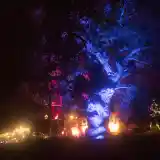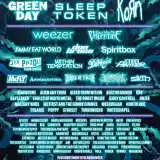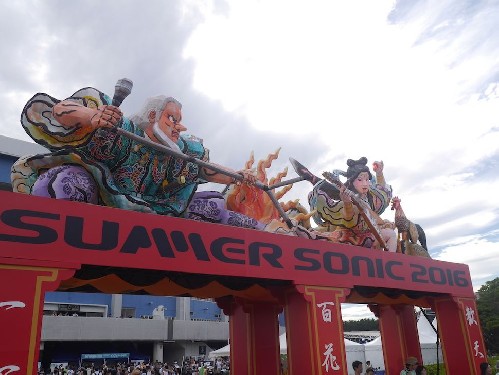
Summer Sonic 2016
Saturday 20th to Sunday 21st August 2016Chiba Marine Stadium& Makuhari Messe + Maishima Sports Island, Tokyo, and Osaka, Japan
Tokyo - 29,500 yen, Osaka 24,500 yen
The debate over Japan's biggest and best festival generally yields 2 answers – Fuji Rock and Summersonic. Compared to the wild mountain escape that is Fuji Rock (review here), Summersonic is an entirely different beast altogether.
Festivals in cities have always seemed a little alien – Part of the joy of going to a festival is to detach yourself from the rush of the real world and surround yourself with nature and music for a couple of days. However, in the worlds’ biggest metropolis that kind of escape seems largely impossible. So, on with the show…
The festival in fact runs two twin events over the same weekend, one in Tokyo and the other in Osaka with the bulk of the lineups swapping each day. It should also be pointed out that the Tokyo event is in fact in Chiba, technically a distinct city but very much part of the Tokyo urban sprawl.
The layout of the festival is a little bit unusual, with the site divided into 2 distinct areas. The first area is based around the Chiba Marines Baseball Stadium, which houses the Marine (main) stage. Around it are several smaller stages and various food and drink outlets. The other area is entirely indoors, hosted in the Makuhari Messe exhibition centre. This enormous indoor complex, similar to something like the NEC in Birmingham, contains 3 stages, a large food hall and various other attractions. The walk between these areas is fairly time consuming (about 30 minutes, depending on crowds) as you have to negotiate the busy local road network.
The Marine Stage (in the baseball stadium) hosts the biggest acts of the weekend, including headliners Underworld, and Radiohead. Other highlights included Weezer, and Two Door Cinema Club, as well as performances from Japanese indie bands Sakana Cushion, and The Yellow Monkey. Access to the stadium, however, is a bit troublesome thanks to a slightly unusual ticketing system. The standing field area is split in half, and when buying tickets you must choose which side you would like to be on. In addition to this, each side is split into 2 areas to prevent crowd surges. The result is time consuming and complicated to navigate, and turning up early is strongly advised. Once you are in place, though, the spectator experience is excellent. Whether this is because of the carefully managed system or not is impossible to say…

Four smaller stages surround the stadium – The Park Stage and The Garden Stage on one side, and The Beach Stage and The Island Stage on the other. The Park and Garden stages seem to be exclusively reserved for Japanese bands, but due to time constraints I was unable to fully investigate them.
Despite the fairly heavy industrialization of the local area, the Beach Stage really encourages a party atmosphere. Although swimming is not encouraged, sun, sand and dance music is a well-established combination and the atmosphere here was a high point of the festival. On the Saturday, the stage was hosted by local club promoters ZoukOut, and featured a lineup packed with feel-good dance music. On the Sunday, Billboard Party took over, bringing some slightly more eclectic music to the stage including Korean indie band Hyukoh, and Larry Graham as the final act of the weekend.
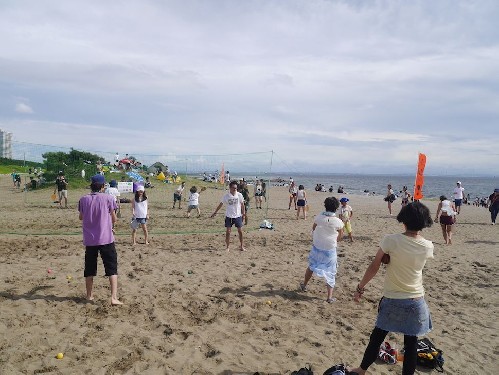
The Island Stage acts as a promotional springboard for artists from all around Asia. The standard of these bands was incredibly high, with Taiwanese jazz rock three piece Elephant Gym, and eclectic Korean disco band Sultans of Disco bring excellent sets that will surely help propel them into the Japanese market.
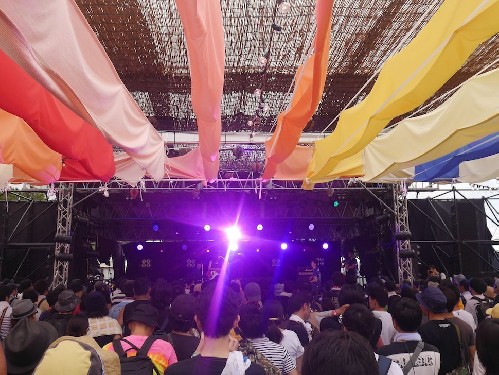
Summersonic almost feels like two events happening independently of each other due to the very different atmosphere of the indoor Makuhari Messe area. The shade and shelter provides a welcome break from the heat of the Japanese summer, and also contains enough curiosities to entertain you for most of the weekend. The Mountain Stage is the biggest space here, a huge aircraft hanger type hall that catered well for the party crowd (Mark Ronson, Flo-Rida, MØ) as well as hosting some bigger western rock bands (The Offspring, The 1975).
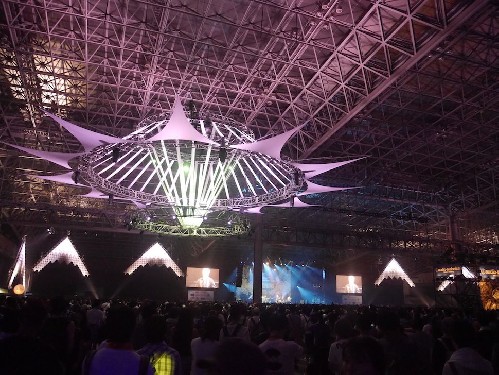
The remaining two indoor stages (The Sonic Stage and The Rainbow Stage) are similar sizes, with the Sonic Stage accommodating almost exclusively western bands, and the Rainbow Stage almost exclusively Japanese. At the Drive-In, Bullet For My Valentine, Slaves, James Bay, and Suede all delivered fantastic sets, and the relative proximity of all three indoor stages made this a very easy place to drift around.
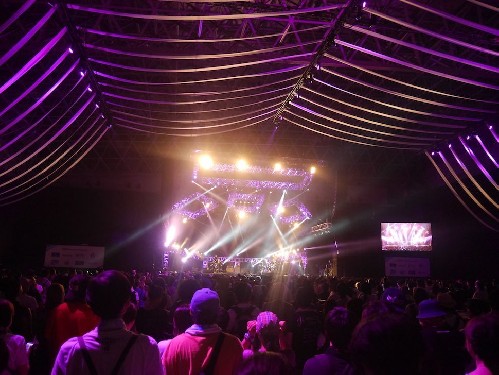
This vast indoor space also contains a food court, a silent disco, a casino, various stalls and workshops, and several audiovisual installations. This is also where the Night Party is hosted – Confusingly, this is branded as a separate event from the rest of the festival. While the majority of the festival closes down for the night at 10pm, the Sonic and Rainbow stages stay open until 5am. This was worth sticking around for, with sets from Deerhunter, Asgeir, Dinosaur Jr, and Animal Collective.
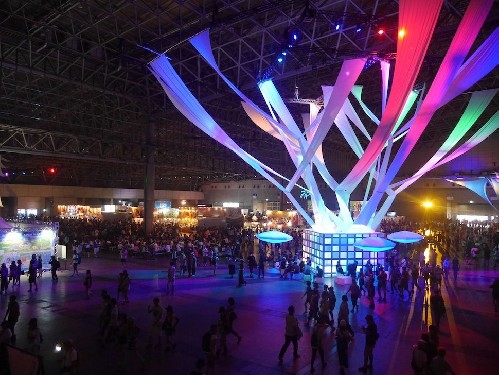
In terms of music, Summersonic is tough to beat. Stages are extremely well equipped and throughout the weekend the sound quality was excellent.
When it comes to other things, though, there are definitely flaws. Branding and advertising are everywhere, and this corporate influence seemed to be pretty restrictive at festival outlets. Budweiser have a monopoly on beer sales, selling half pints of disappointing lager at 600 yen (about £4), and the range of soft drinks restricted to Red Bull and Zima. Food, although not overtly branded, seems to be similarly restricted. Access is also a problem – Local accommodation is limited and expensive, and the trains are extremely crowded especially heading towards Tokyo. Also, trains do not run between midnight and 5am, so if you want to stick around for the night party you either have to commit to an all nighter, take an expensive taxi or curl up in a corner somewhere. The two separate sites and choosing a side of the arena is also a bit longwinded and confusing, but the staff are polite and helpful and speak decent English.
Ultimately, though, most criticisms have been washed away by a staggeringly good performance from Radiohead. Summersonic may need a few tweaks to reach perfection, but the focus here is very much the music, and in that respect it delivers impressively.
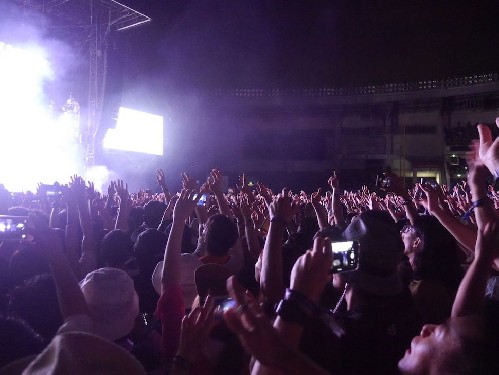
Latest Updates
 in terms of music, Japan's Summersonic is tough to beat
in terms of music, Japan's Summersonic is tough to beatSummer Sonic 2016
 Summer Sonic 2016
Summer Sonic 2016photo galleries
 Summer Sonic 2016
Summer Sonic 2016festival details
 Summer Sonic
Summer Sonicfestival home page
 Summer Sonic 2015
Summer Sonic 2015festival details




